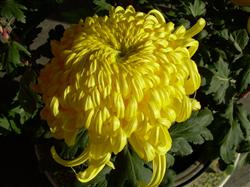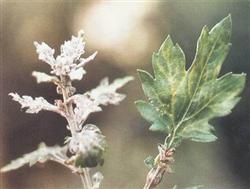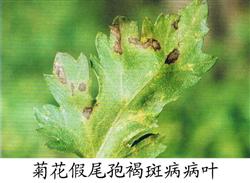Cultivation and Management of Yellow Chrysanthemum

Yellow chrysanthemum is called chrysanthemum cauliflower. The leaf of chrysanthemum cauliflower plant is round, the petiole is shortened and many wheels form a chrysanthemum shape, the petiole is green, the leaf is glossy, the leaf edge is entire, the weight of single plant can reach 150 grams, the quality is good, and the flavor is better after frost. Chrysanthemum cauliflower has the effect of clearing heat, dispelling wind, detoxification and eyesight. Many friends ask about the knowledge of chrysanthemum cauliflower planting, so in order to better cultivate chrysanthemum cauliflower, here we learn about the planting and cultivation techniques of chrysanthemum cauliflower. (1) cultivation season and cultivation methods of chrysanthemum cauliflower, chrysanthemum cauliflower can be cultivated for many years and harvested many times at a time, but land exchange planting every year can improve the yield and quality. Field edge and gap land are usually used for open field cultivation, and large area cultivation can be carried out in the form of direct seeding or transplanting. In South China, seedlings are generally sown from early February to early March, and late sowing seeds are easy to lose their germination power. They are planted in early April, and tender stems and leaves can be harvested and listed in May. The fine management can be harvested continuously for about 3 years. (2) selection of chrysanthemum cauliflower varieties chrysanthemum cauliflower can be divided into large leaf species and small leaf species according to leaf size. 1. The leaflet species have small leaves, deeply cracked leaf edges, lilac petioles, thin leaves and thin branches, low yield and poor quality. two。 Large-leaf species, also known as Chrysanthemum morifolium, the leaves are oval, the apex is obtuse, the leaf margin is thin and shallow, the quality is good, the yield is high, it is a variety cultivated more in production at present. (3) Propagation methods of chrysanthemum cauliflower 1. Before seed reproduction and sowing, apply enough rotten organic fertilizer as the base fertilizer, and turn the rake deeply to make a flat bed. Sow the seeds with fine sand, cover the fine soil with a thickness of about 0.5 cm, cover the sunshade net and water thoroughly after sowing. Cover plastic film in early spring when it is cold and rainy to maintain soil moisture and temperature. Watering should be sprayed carefully to prevent soil surface hardening. About 10 days later, the seedlings were unearthed, removed the sunshade net or plastic film, and when the seedlings had 2-3 pieces, they could be transplanted to the field. Chrysanthemum cauliflower can be sown directly, sowed in February in the south of China, and sown in the cold areas of the north in early April, with a seed amount of about 0.2 kg per mu. 2. Ramet propagation can dig out the old stubble chrysanthemum cauliflower in the middle and late March, expose the root neck, cut off the lateral buds of the existing roots together with the old roots, and transplant them into the field. Ramet propagation is more suitable for sprouting new shoots. 3. Cutting propagation can be carried out in the whole growing season, and the survival rate of cutting from April to June is the highest. It is best to mix new soil with rotten organic fertilizer in the seedbed. Cut the branches with 3 ~ 5 nodes and 8 ~ 10 cm in length, remove the basal leaves, and dig into the soil at the depth of the cuttings. Keep the work bed moist and avoid waterlogging after cutting. shade is needed in high temperature season, and plastic film arch shed can be built to keep warm and moist when the temperature is low. Generally, it can be transplanted to Daejeon after 15 days. (4) seedlings with 2 or 3 true leaves or cuttings with sprouting shoots and luxuriant roots should be planted in time. Chrysanthemum cauliflower is afraid of waterlogging and should be ridged in deep trenches to facilitate drainage in the rainy season. As a perennial herb, it requires a long-term supply of soil nutrients, and sandy loam with fertile soil, convenient drainage and irrigation, loose and good ventilation should be selected. Apply sufficient base fertilizer before planting, apply 2000-2500 kg per mu of base fertilizer, deep ploughing and raking soil, and make the whole bed. The plants with strong growth and free of diseases and insect pests were selected and planted in the afternoon of cloudy or sunny days with a row spacing of 12 cm × 15 cm and 2 plants in each hole. Water thoroughly after planting. (5) Field management of chrysanthemum cauliflower 1. Fertilizer and water management Chrysanthemum cauliflower should be topdressing once 5 days after planting to promote growth, and then once every 7-10 days, using soil and miscellaneous fertilizer combined with urea and compound fertilizer. Pay attention to watering during high temperature and drought in summer, but avoid stagnant water in the field, and pay attention to waterlogging and drainage in rainy season to prevent rotting roots. Chrysanthemum cauliflower has strong branching, fast lateral branch germination and great demand for fertilizer, so the times of topdressing should be increased when cultivated in barren soil. 2. Before the herbicidal plants are closed, the weeding by intertillage can prevent the soil surface from hardening and is beneficial to the growth of roots. After harvesting the old stubble stalks before winter, it is appropriate to loosen the soil, cultivate the soil, and apply fertilizer to cover it. Usually about 1500 kg per mu of organic fertilizer is applied to facilitate the smooth overwintering of the plant and the early germination of new shoots. 3. Plant adjustment chrysanthemum cauliflower has exuberant growth and strong branching ability, so necessary pruning must be carried out to control plant growth, promote lateral bud branching, facilitate field management and enhance ventilation and light transmission. Usually, when the growth of chrysanthemum cauliflower is not closed, it is harvested and topped to promote the germination of lateral buds. When the plant develops to a certain extent, its height should be controlled at about 30 cm, and the vigorous long branches, disease and insect branches and withered branches should be cut off to improve the yield and quality. After the seeds are ripe in December, cut off the flower heads to dry, rub out the seeds, cut off the old stubble and cover the soil with fertilizer.
- Prev

Occurrence and control of chrysanthemum powdery mildew
Powdery mildew of chrysanthemum is one of the common diseases in flowers, which is distributed in the south and north of China. Powdery mildew of chrysanthemum causes poor plant growth, withered leaves and even does not blossom, seriously affecting the effect of greening and beautification and flower production, but also harming melon leaf chrysanthemum, calendula, echinacea, African chrysanthemum, Persian chrysanthemum, emerald chrysanthemum, dahlia.
- Next

Control of pseudotail brown spot of chrysanthemum
The main results are as follows: 1. the symptom spot is born on both sides of the leaf, nearly round, the edge is not obvious at the initial stage, and then sometimes produces a dark brown thin coil, often along the edge of the leaf. The foliar disease spot is light yellow at the beginning, brown to dark brown in the later stage, and grayish brown on the back of the leaf. 2, the disease is caused by fungi, pathogen.
Related
- Fuxing push coffee new agricultural production and marketing class: lack of small-scale processing plants
- Jujube rice field leisure farm deep ploughing Yilan for five years to create a space for organic food and play
- Nongyu Farm-A trial of organic papaya for brave women with advanced technology
- Four points for attention in the prevention and control of diseases and insect pests of edible fungi
- How to add nutrient solution to Edible Fungi
- Is there any good way to control edible fungus mites?
- Open Inoculation Technology of Edible Fungi
- Is there any clever way to use fertilizer for edible fungus in winter?
- What agents are used to kill the pathogens of edible fungi in the mushroom shed?
- Rapid drying of Edible Fungi

